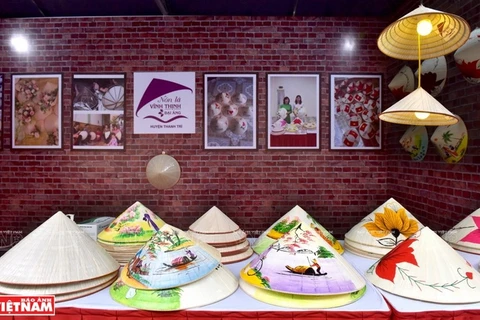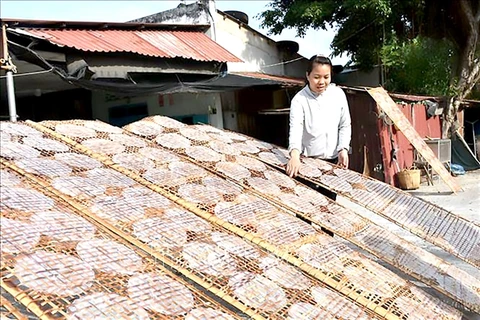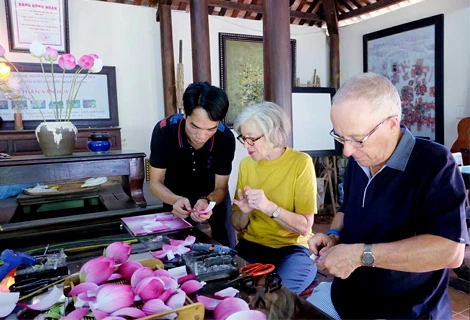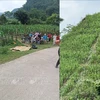 After being knitted, mats are dried under the sun in Long Dinh Mat Knitting Village in Tien Giang province’s Chau Thanh district. (Photo: VNA)
After being knitted, mats are dried under the sun in Long Dinh Mat Knitting Village in Tien Giang province’s Chau Thanh district. (Photo: VNA) One or two of them will be developed in combination with tourism by 2025 under a plan unveiled by the province People’s Committee to develop craft villages in 2023-30.
The five traditional craft villages and eight craft villages make various products such as vermicelli, rice paper, seafood, mats, bamboo knitting products and wooden furniture.
The Long Dinh Mat Knitting Village in Chau Thanh district, for instance, has been operating for nearly 70 years and produces patterned sleeping mats with high quality and beautiful designs.
Its mats are well-known in the delta.
The plan envisages 70% of the villages functioning efficiently by 2025, around 80% of their workers being trained or retrained to improve their skills and knowledge of basic information technology, and ensuring hygiene and labour safety at their workplace.
The province also aims to have at least 50% of the villages making products recognised under the country’s One Commune-One Product programme.
It wants the average income of workers to increase by at least 150% from 2020 and all production establishments to comply with environmental protection regulations.
It has also set out various targets for 2030.
For instance, it expects at least 50% of the villages to have developed brands for their products.
The Department of Agriculture and Rural Development would implement the plan, Tran Hoang Nhat Nam, its deputy director, said.
It would help establishments in craft village participate in fairs and handicrafts contests to introduce and promote their products, he said.
There are 3,600 households, 65 companies and other establishments and 11,867 workers in traditional craft villages and craft villages.
The artisans earn 3.5-5 million VND (150-215 USD) a month on average.
The villages have played an important role in creating jobs and incomes for rural people and improving their lives, helping reduce poverty and enabling creation of new-style rural areas.
However, they still have many limitations such as small scale and lack of mechanisation, Vo Van Lap, head of the province’s Rural Development Sub-department, said.
Many establishments lack the resources needed to obtain advanced production techniques or expand, he said.
Most buy inputs from other areas, lack the infrastructure and services needed for their production and lack linkages with travel companies to develop tourism services, he said.
They also face a shortage of artisans many of whom prefer to work in industries to earn higher incomes./.
VNA
























